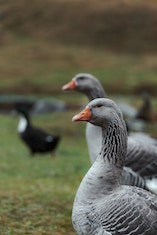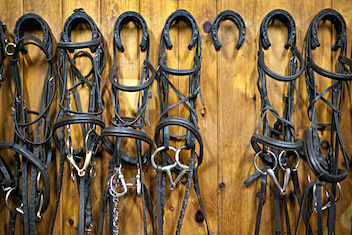
Many people think about apostrophes in the same way they think about getting stuck in a patch of cactus: they’d rather not. But possessive apostrophes for plural words and names are relatively simple (certainly compared with singular personal names). There is straightforward two-step process:
Step 1: Add an apostrophe after the end of the plural word (regardless of the last letter, and whether the word is a personal name or any other word). For example: axes’, boxes’, cacti’, children’, gâteaux’, geese’, Joneses’, Lacroixes’, men’, mice’, ponies’, quizzes’, Rodriguezes’, women’


Add an apostrophe at the end of the plural word: geese’, mice’ …
Step 2: Does the word end in s or x? If so, do nothing more (and the vast majority of plural words in English do end in s). If the plural word does not end in s or x, add an s after the apostrophe: axes’ labels, boxes’ lids, cacti’s spines, children’s books, gâteaux’ prices, geese’s hissing, Joneses’ house, Lacroixes’ holiday, men’s clothes, mice’s cords, ponies’ bridles, quizzes’ answers, Rodriguezes’ party, women’s hats


If the plural word does not in s or x, add s after the apostrophe: men’s clothes, women’s hats


If the plural word does end in s or x, add nothing after the apostrophe: gâteaux’ prices, ponies’ bridles
Note: there are very few words used in English that form a plural with x. These words (and the x plural) come from French. Three of the ones you are most likely to encounter are beaux, chateaux and tableaux. Depending where you are in the world and what dictionary you like to use, you may actually make these words plural with an s: beaus, chateaus and tableaus (these are all recommended spellings from Australia’s Macquarie Dictionary). This leaves perhaps just gâteaux as the sole word used in English that forms a plural with x. Something to ponder as you eat your cake …
And it seems that IT folk are not keen to use mice as the plural of mouse. They prefer mouses. I believe they should pay more attention to irregular plurals.

If you have found this post interesting, you can find a full index to my other posts on the index page. To be notified when I post a new topic, follow me on Facebook! If you have any particular questions you’d like me to answer in future posts, just send me a message. I’m always interested to learn what people think, and how you came across this site, so please post a comment.
If you think you would be interested in either my complete grammar course or an individual customised online course (particularly suited for people who don’t live in Melbourne), just click your preferred option.
2 comments on “The possessive apostrophe: plural words and names”